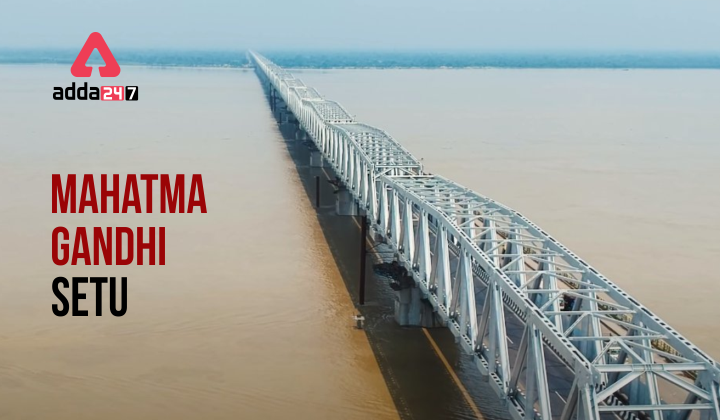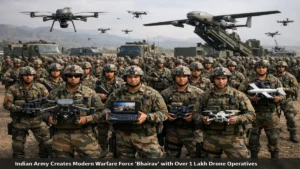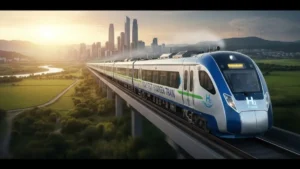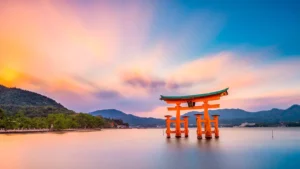Mahatma Gandhi Setu: About
Mahatma Gandhi Setu is also called Gandhi Setu or Ganga Setu. The bridge is situated over the Ganga River in Bihar, India. The Mahatma Gandhi Setu connects Patna from the south and Hajipur from the north of Bihar. The length of Mahatma Gandhi Setu is 5,750m (18,860) making it the third-longest bridge in India. In May 1982, the bridge was inaugurated by the then Prime minister Ms. Indira Gandhi, from Hajipur, Bihar.
Buy Prime Test Series for all Banking, SSC, Insurance & other exams
Mahatma Gandhi Setu: Approval
The central government approved the construction of Mahatma Gandhi Setu in 1969. The bridge was constructed by Gammon India Limited and the construction took over ten years. The construction started in 1972 and was completed by 1982, with an expenditure of ₹87.22 crores. The bridge connects the northern part of Bihar with Patna which is the state capital, as a part of NH 19.
The other bridges that are constructed across the river Ganga in Bihar other than Mahatma Gandhi Setu are-
- Rajendra Setu, which is 4.5km and was inaugurated in 1959. It was built over Ganga.
- Vikramashila Setu was also built across Ganga. It is 8,000 m and was inaugurated in 2001.
Other than these two more rail-cum-road was inaugurated between Digha and Sonepur and other at Munger. Kacchi Dargah Biddupur was also built under the Greenfield Expressway, which was still under construction at Chhapra, Bakhtiyaarpur, and Sultanganj.
Mahatma Gandhi Setu: Engineering
The bridge was composed of 45 intermediate spans of 121.065 m each and at each end, a span of 65.530 m. The deck comes with 7.5 meters wide two-lane roadway for IRC class 70 R consisting of footpaths on both sides. For construction Cantilever segmental construction method was used, each span consisted of two cantilever beams on both sides which were free to move at the ends. Two lanes were constructed one upstream and another one downstream, each was 6 meters wide. These are not connected and are free from each other.
Mahatma Gandhi Setu: Why the construction expenditure was increased?
- Construction of the Mahatma Gandhi Setu started in 1972.
- Opening ceremony of the bridge was in June 1978.
- At first, the tender cost was ₹23.50 crores, later the cost was increased due to a few reasons which state that the tender cost was increased because of the in-built cost.
- The total expenditure of the bridge was ₹87.22 crores.
Mahatma Gandhi Setu: Traffic Clogging
In recent times, the crowd crossing the bridge has increased to an unhealthy amount, which is concerning. The chaos is created due to the increase in the number of vehicles crossing the bridge every day. This is causing overload. The state government decided to build two pontoon bridges parallel to the Mahatma Gandhi Setu considering the everyday problems of overloading and clogging traffic. On 21st September 2020, the foundation stone for 4-lane road bridges was laid by Prime Minister Mr. Narendra Modi, measuring 14.5 Km with an expenditure of Rs.2929.42
Mahatma Gandhi Setu: Rehabilitation Project
Mahatma Gandhi Setu is now being renovated, and the Mahatma Gandhi Setu Rehabilitation Project is being executed under the Afcons Infrastructure and Sibmost OJSC. The estimated cost of the rehabilitation is ₹1,742,01 crores. The structure of Gandhi Setu was dismantled and replaced with a steel framework which costs ₹237 crores. The renovation included the installation of triangular steel trusses on each flank of Mahatma Gandhi Setu. On 31st July 2020, the renovated western flank was opened to the public.
FAQs related to Mahatma Gandhi Setu
1. Where is Mahatma Gandhi Setu in India?
Ans. Mahatma Gandhi Setu is also known as Gandhi Setu or Ganga Setu. It connects Patna to Hajipur, in Bihar. It is the third-longest river bridge in India.
2. Who inaugurated Mahatma Gandhi Setu in Patna?
Ans. In 1982, the Mahatma Gandhi Setu was inaugurated by the Prime minister of India, Ms. Indira Gandhi. The bridge is situated over the river Ganga and is a prominent landmark of the city.
3. When was the Gandhi Setu built-in Patna?
Ans. The construction of the bridge was approved by the Central Government in 1969 and was built by Gammon India Limited. It took 10 years to build the Mahatma Gandhi Setu which was from 1972-to 1982.




 Indian Army Creates Modern Warfare Force...
Indian Army Creates Modern Warfare Force...
 Haryana to Launch India's First Hydrogen...
Haryana to Launch India's First Hydrogen...
 Which Country is known as the Land of th...
Which Country is known as the Land of th...







